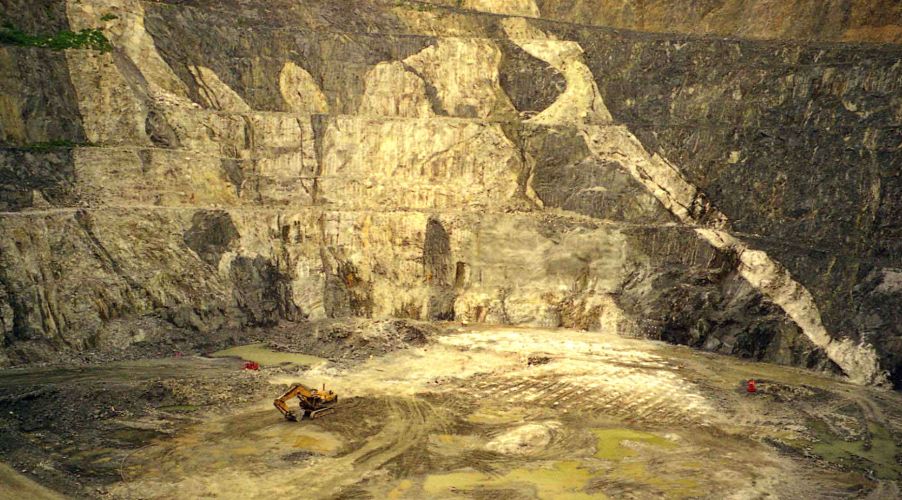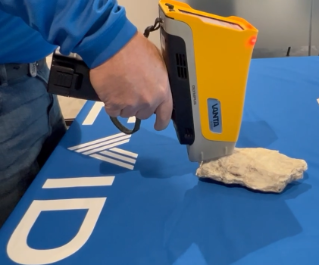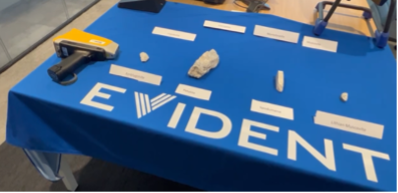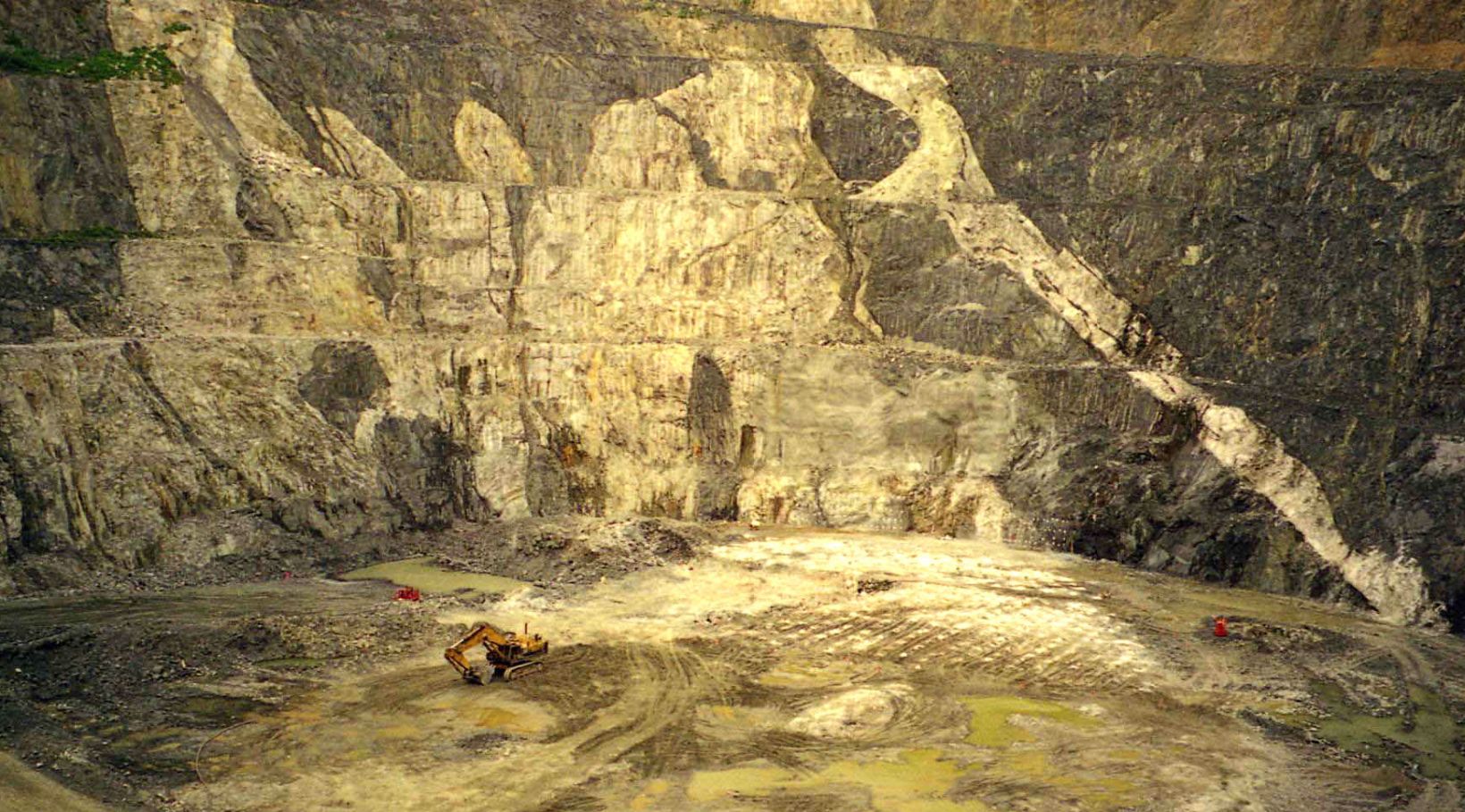Our mineral exploration customers commonly use portable X-ray fluorescence (pXRF) to search for fertile pegmatites, which can host economic amounts of lithium-bearing minerals, like spodumene. However, they can also host similar looking minerals that bear no lithium or lithium in a form that is less economic to extract, such as a petalite. Knowing what type of lithium mineral you’re dealing with is critical for making the right call in the field.
To aid efficient exploration for hard rock lithium , we collaborated with Lot Koopmans—PhD candidate at the University of Oxford—to develop a technique that enables our Vanta™ handheld XRF to identify typical pegmatite minerals based on the measurement of a sample’s chemistry and display the mineral name on the analyzer’s screen. This can help geologists make informed data-driven decisions in the field.
Lithium Mining and XRF
Lithium mineral identification is vitally important in both early- and late-stage exploration and during the mining phase. The value of a lithium project is particularly dependent on which mineral hosts the lithium. Lithium in pegmatites can take many mineral forms, like spodumene, petalite, and lepidolite.
Portable XRF cannot directly measure the lithium content, however the Vanta pXRF now enables geologists to confidently discriminate pegmatites in the field in seconds and advance project timeframes through the effective decision making this new feature provides. This tool can help geologists quickly calibrate their own visual assessments of the minerals they are investigating.
We have successfully developed this capability for the identification of some of the most important lithium-bearing minerals, including:
- Spodumene
- Lepidolite
- Petalite
- Amblygonite-Montebrasite
- Lithian Muscovite
- Eucryptite
We can also discriminate non-lithium-bearing phases, such as:
- Quartz
- Albite
- Microcline
- Muscovite
Evident’s Todd Houlahan, Director of International Mining, sat down with Lot to discuss his work on lithium mineralogy identification with the Vanta portable XRF analyzer.
Todd: Please introduce yourself and describe the work that you're doing.
Lot: I'm currently doing a PhD at the University of Oxford, and I study the origin and ways to improve our exploration methods for lithium deposits, primarily hard rock lithium deposits.
Todd: You've done a lot of work with lithium explorers and miners. What can you tell us about the work that you've done without divulging any confidential information?
Lot: I've worked with quite a few companies all around the world working at all stages of mining from the very early greenfield stage through to people who are just about to start producing. And what I've noticed quite a bit is that, especially in the early stages, people are still struggling a little bit with fully comprehending exactly what they have in their deposit. I think this is a bit of growing pains as this part of the industry grows. So that's what I've been trying to help different companies with—better understanding what they've got and how to explore for more in their areas.
Todd: Why is understanding lithium mineralogy so important?
Lot: That’s a good question. Unlike gold or other base metals, your mineralogy fundamentally dictates how easy it is to process your lithium deposit. Something could be deposited 100 million tons at 1 percent in one area while the exact same tonnage in another area might be fundamentally of completely different values. For example, there’s two main lithium types: aluminum silicates of spodumene and ethylate. Spodumene is valued far higher because it's much easier to process. Therefore, you can have the same tonnage and grades with one being worth quite a bit more. It is really important from both the investment side and from the mining side to understand what your mineralogy is.
Todd: Can you describe some of the work that we've been doing together?
Lot: I think part of the difficulty with pegmatites is that other than maybe lipidylate, which has this nice purple color, in most cases they are all white. Unless you are really confident at what you're looking at, it's hard to identify the mineralogy in different deposits. Once you know what you’re looking at, it is pretty easy to continue, but that first identification is key. So, what we've been doing together is using portable XRF to identify mineralogy based on their unique chemistries.
Todd: I think it has been going pretty well, do you agree?
Lot: Yeah, we've done a few tests on some specimens in the lab and some real specimens from different mines around the world. And we've been getting really good accuracy. So, it's proving to be very promising to really help out with this identification in the field.
Todd: Do you think the industry is still focused on using other technologies to give a lithium number that doesn't help them understand the mineralogy of the deposit?
Lot: Yeah, I think, especially with a handheld device, unless you do a whole bunch of preparatory steps in advance to homogenize your sample and do all the matrix corrections, a lithium value from just a field XRF gun can be a bit spotty as to how representative it is of what you really have. One of the values of a portable XRF is that it's a reliable technique for identifying the chemistry, so we can use that to identify our mineralogy. And you can even identify lithium minerals without calculating a lithium concentrate.
Todd: We’re going to be demonstrating this method at a few different events, so if anyone wants more information, they can connect with us or connect with you, right?
Lot: Absolutely! I always enjoy talking to other miners.
Todd: Thanks very much for your time today.
See Our Lithium Pathfinder Method in Action
Check out the video below to see a Vanta pXRF analyzer testing for lithium mineralogy by identifying the presence of amblygonite, petalite, spodumene, and lithian muscovite.
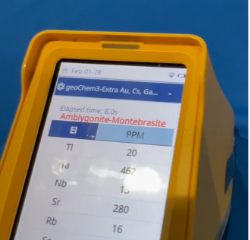 |
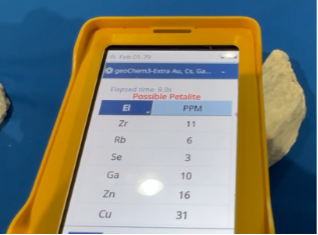 |
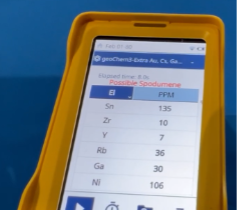 |
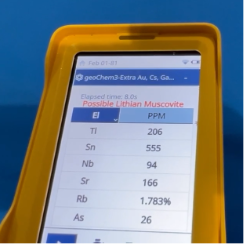 |
If you’d like to learn more, you can contact us or email Lott.
Request a Demo:
Learn more about Vanta Max portable XRF Analyzer.
Related Content:
Lithium Exploration in LCT Pegmatites using Portable XRF
